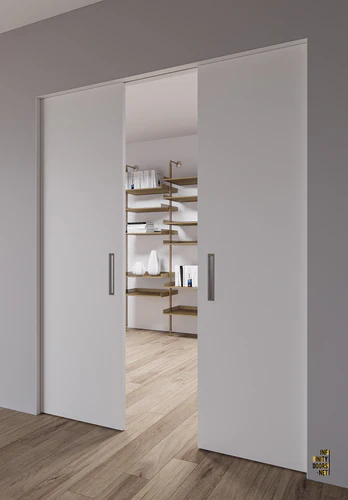

Doors in modern homes serve as visual statements and not mere functional elements. Increasingly popular as a contemporary design solution is a door with no frame, also known as frameless lines or flush doors. The style reflects neatness, minimalism, and maximizes space, thus fitting perfectly with the needs of a modern residence and small living spaces. Should you have a plan of upscaling your interiors, here is a stepwise method to selecting the perfect door without frame.
Before diving into materials and finishes, it’s essential to understand why a door without frame might be the right choice. Unlike traditional doors with bulky trims, these doors sit flush with the wall, creating a seamless appearance. They save floor space, enhance the flow between rooms, and give your home a modern, sophisticated aesthetic. Additionally, they are versatile enough to be used in bedrooms, bathrooms, closets, and offices.
Accurate measurements are critical when installing a door without frame. Unlike standard doors, frameless doors require precise sizing to ensure a smooth fit and operation. Measure the width, height, and depth of your opening carefully. Consider wall thickness and track or hinge placement if you’re using sliding or pivot options. Taking precise measurements upfront prevents costly mistakes and ensures your door operates perfectly.
Frameless doors come in a variety of materials, each offering distinct advantages:
Solid Wood: Durable, classic, and customizable. Solid wood doors provide excellent insulation and a high-end look.
MDF or Engineered Wood: More affordable than solid wood, easy to paint, and resistant to warping.
Glass: Ideal for modern interiors, glass doors create an open, airy feel while allowing light to pass through. Frosted or tinted glass provides privacy without sacrificing style.
Metal or Aluminum: Perfect for industrial designs, these doors are sturdy, durable, and low-maintenance.
Choosing the right material depends on your design preferences, the room’s function, and your budget.
A door without frame can be installed in multiple ways depending on space and style:
Swinging Door: Opens like a traditional door but without the frame. Often used with pivot hinges for a modern look.
Sliding Door: Ideal for small spaces, slides into a recessed wall pocket for a seamless finish.
Bifold or Folding Door: Great for closets or pantries, folds compactly against the wall.
Consider how you will use the space and choose a style that enhances both aesthetics and functionality.
The finish and color of a door without frame significantly impact your room’s overall feel. Neutral colors like white, gray, or beige enhance a minimalist look, while bold colors like black or navy create a statement. Finishes can be matte, glossy, or textured. Wood grains or metallic coatings add personality and complement existing décor. Make sure the color and finish match your walls, flooring, and other elements for a cohesive look.
Even though the door has no frame, hardware is still essential. Choose handles, hinges, or sliding mechanisms that blend with the design. Minimalist recessed handles work well for frameless doors, maintaining a flush, seamless appearance. For sliding doors, smooth, silent tracks enhance the user experience. Selecting the right hardware ensures both functionality and aesthetic appeal.
Installing a door without frame can be more complex than standard doors due to its flush design and precise measurements. Hiring professionals ensures the door is level, slides or swings smoothly, and maintains a polished look. Proper installation also extends the life of the door and avoids issues like sticking, misalignment, or gaps.
Maintaining a door without frame is relatively simple. Clean surfaces regularly with non-abrasive cleaners to preserve the finish. Inspect sliding tracks or hinges periodically to ensure smooth operation. Proper care keeps your frameless door looking new and functioning efficiently for years.
Choosing a door without frame is an excellent way to modernize your home, save space, and create a sleek, elegant look. By understanding the benefits, measuring accurately, selecting the right material, style, and hardware, and investing in professional installation, you can ensure a flawless outcome. Frameless doors are not just a trend—they’re a long-term solution for homeowners seeking style, functionality, and sophistication.
Whether for a small apartment or a large contemporary home, a door without frame transforms interiors with minimal effort, proving that sometimes, less truly is more.